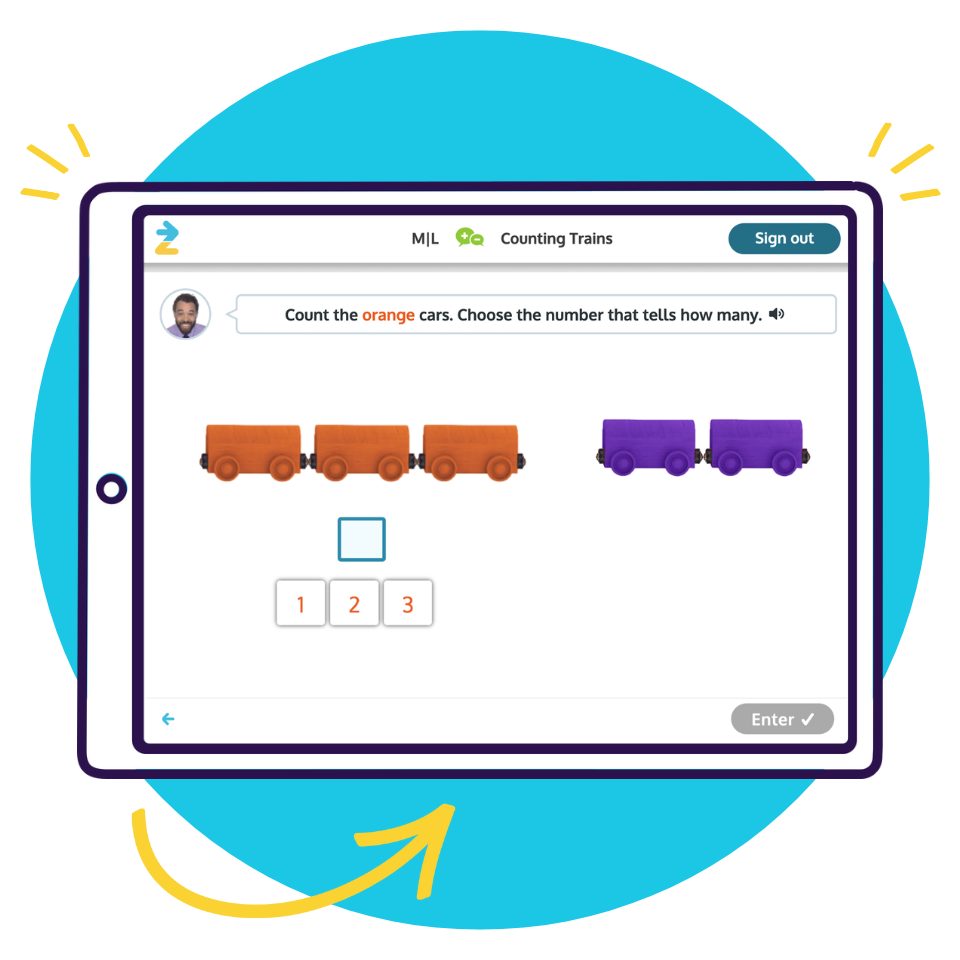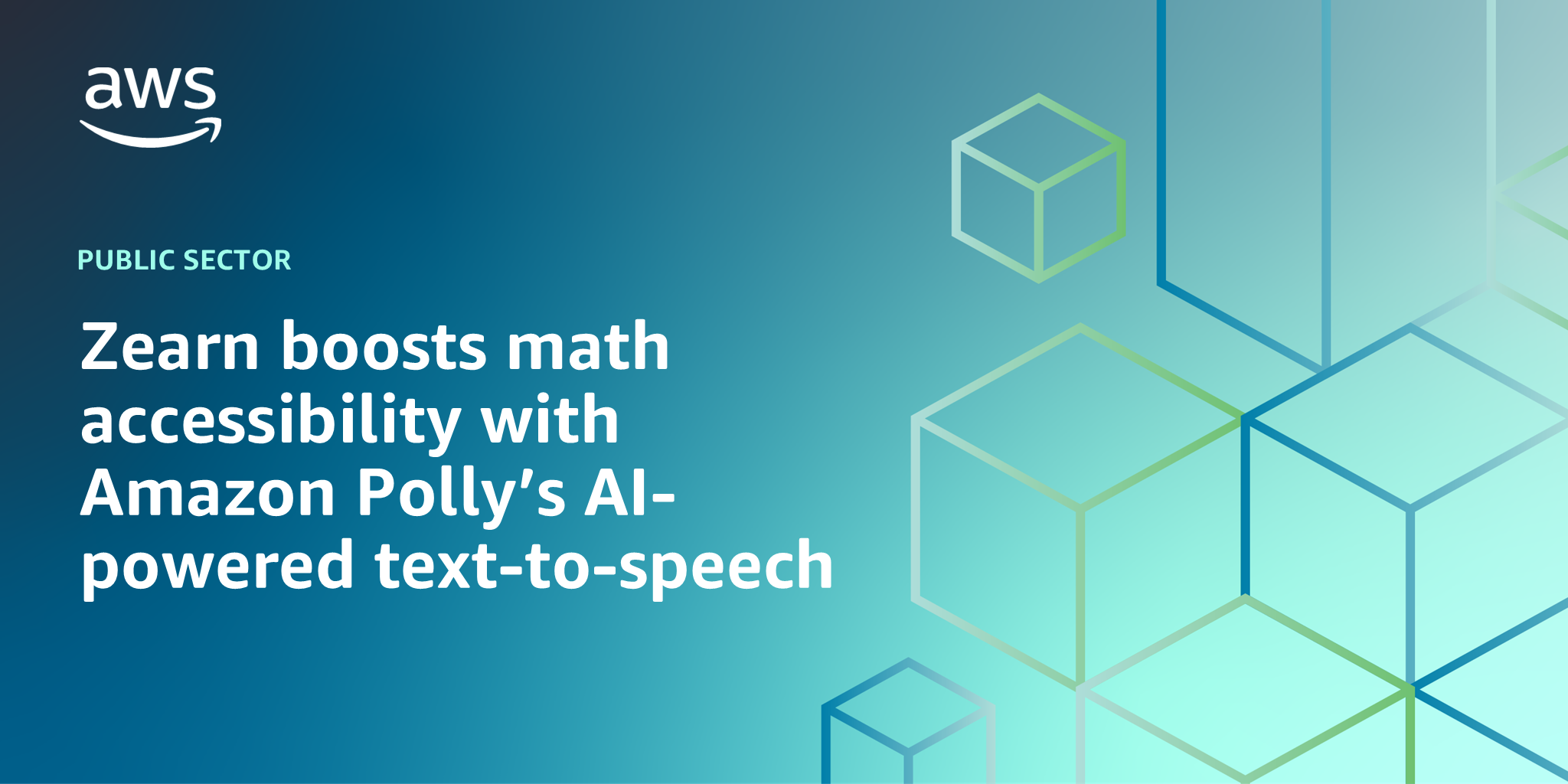AWS Public Sector Blog
Zearn boosts math accessibility with Amazon Polly’s AI-powered text-to-speech
This is a guest post from Zearn, an AWS customer.
Every day, in tens of thousands of classrooms across the country, students log in to Zearn Math to engage with rigorous, grade-level math learning. As the top-rated K-8 math learning platform used by millions of US students, Zearn is built on the belief that every kid can succeed in math with the right support. As part of its nonprofit mission, Zearn conducts and participates in research studies to enhance the learning experience and improve student outcomes.
The challenge: Advancing accessibility by changing out the robotic voices
Every Zearn Math lesson includes grade-level learning through fluency games, video instruction from on-screen teachers, and interactive problem-solving using word problems. To ensure all students—especially early readers and English learners—can fully engage with these lessons, Zearn includes text-to-speech (TTS) technology that reads math problems aloud. This audio support allows students to focus on math reasoning rather than understanding written instructions.
However, the browser-based TTS voices originally used across all 1,000+ lessons often sounded robotic and disconnected from the warm, clear instruction delivered by Zearn’s on-screen teachers. Recognizing this mismatch, the Zearn team saw an opportunity to improve the learning experience by upgrading to a higher-quality TTS solution.
After evaluating multiple AI-powered TTS providers, the team selected Amazon Polly, a scalable, high-quality TTS solution from Amazon Web Services (AWS), which offers human-sounding voices, Spanish-language support, and seamless API integration. To ensure that switching to Amazon Polly would improve students’ learning experience, the Zearn team sought to gather evidence of impact on student engagement before implementing the new feature. Using a phased testing approach, the team began with small-scale user interviews, and then, based on success, launched a two-phase, large-scale, in-platform experiment.
Pilot testing: Enhancing kindergarten learning
To assess impact among the platform’s youngest users, the Zearn team began by testing three voice options with kindergartners, identifying those that captured student attention and enabled comprehension.
Half of the kindergarteners interviewed strongly preferred the “Ruth” voice as their favorite narrator. Based on this feedback, the Zearn team implemented Ruth as the standard voice across all 100 kindergarten lessons—so that students could continually hear a clear, friendly voice that aligned with their learning experience.

Figure 1. Zearn Math’s kindergarten problems use text-to-speech auto-readers to help all students engage with math.
A rigorous approach: Testing Amazon Polly’s impact at scale
Building on successful implementation of Amazon Polly in its kindergarten lessons, the Zearn team conducted additional research to gather evidence of impact before rolling out similar improvements to over 900 first- through eighth-grade lessons. The test used a two-phased approach, beginning with interviews to gather preliminary feedback from students regarding which voices were most engaging and easy to understand.
The majority of students chose “Ruth,” “Matthew,” and “Kevin” as their preferred voices out of six options. One eighth-grade student reported that, “[Matthew] seems like an actual teacher,” while a third-grade student said, “I think it would be easier for the kids to listen and hear [Ruth].”
Based on this qualitative feedback, the Zearn team then launched a large-scale, randomized, in-platform experiment to evaluate which AI-generated voice best supports student learning outcomes. The 58,000 first- through eighth-grade students participating in the test were randomly assigned to one of four groups: a control group that continued using the original browser-based TTS voice while completing their lessons, and three that experienced different Polly voices: “Ruth,” “Matthew,” and “Kevin.”
To assess the impact of each voice, the Zearn team tracked several key success metrics for each group, including how often students used the audio feature, how long they took to complete activities while using audio support, and the number of embedded support tips they used in each problem in which the audio feature was activated. Using these metrics, the Zearn team was able to analyze how hearing human-like voices affected students’ focus, understanding, and need for support as they learned. This data-driven approach allowed Zearn to evaluate engagement authentically and at scale—without interrupting the learning experience.
Evidence in action: Encouraging engagement results from a large-scale study
Results from the large-scale testing showed that students who heard Polly voices showed improvements in their learning experience when compared with students who heard browser-generated TTS voices. Students learning with Polly voices demonstrated statistically significant improvements across two key areas of learning: time taken to complete a math activity and the amount of help students needed during the activity. Importantly, students learning with Polly voices used the audio feature 20 percent more often than students who heard browser-generated voices, suggesting that kids who benefitted from language support were choosing to continue using it.
Larger effects were observed among students in grades 1-5 compared to middle-school students, which may be due to younger students relying more on TTS to supplement gaps in reading fluency.
These findings provided evidence that when students learned with Amazon Polly’s TTS voices, they saw boosts in engagement and comprehension, signaling Polly’s potential to enhance Zearn Math’s learning experience. This potential is particularly meaningful for young learners and students learning English, for whom TTS support is essential to build a strong foundation with Zearn Math.
What’s next: Rolling out Amazon Polly across all grade levels!
Based on these results, the Zearn team plans to expand its updated TTS solution to grades one through eight during the 2025-26 school year.
Zearn’s commitment to delivering an engaging and accessible learning experience is deeply rooted in its use of data to drive continuous improvement. By continuing to measure and refine how students interact with TTS, Zearn ensures that every learner—regardless of reading proficiency or English language fluency—has access to high-quality, grade-level math instruction.
Educators, administrators, and parents can learn more about how Zearn Math supports math learning for all students on Zearn’s website.
